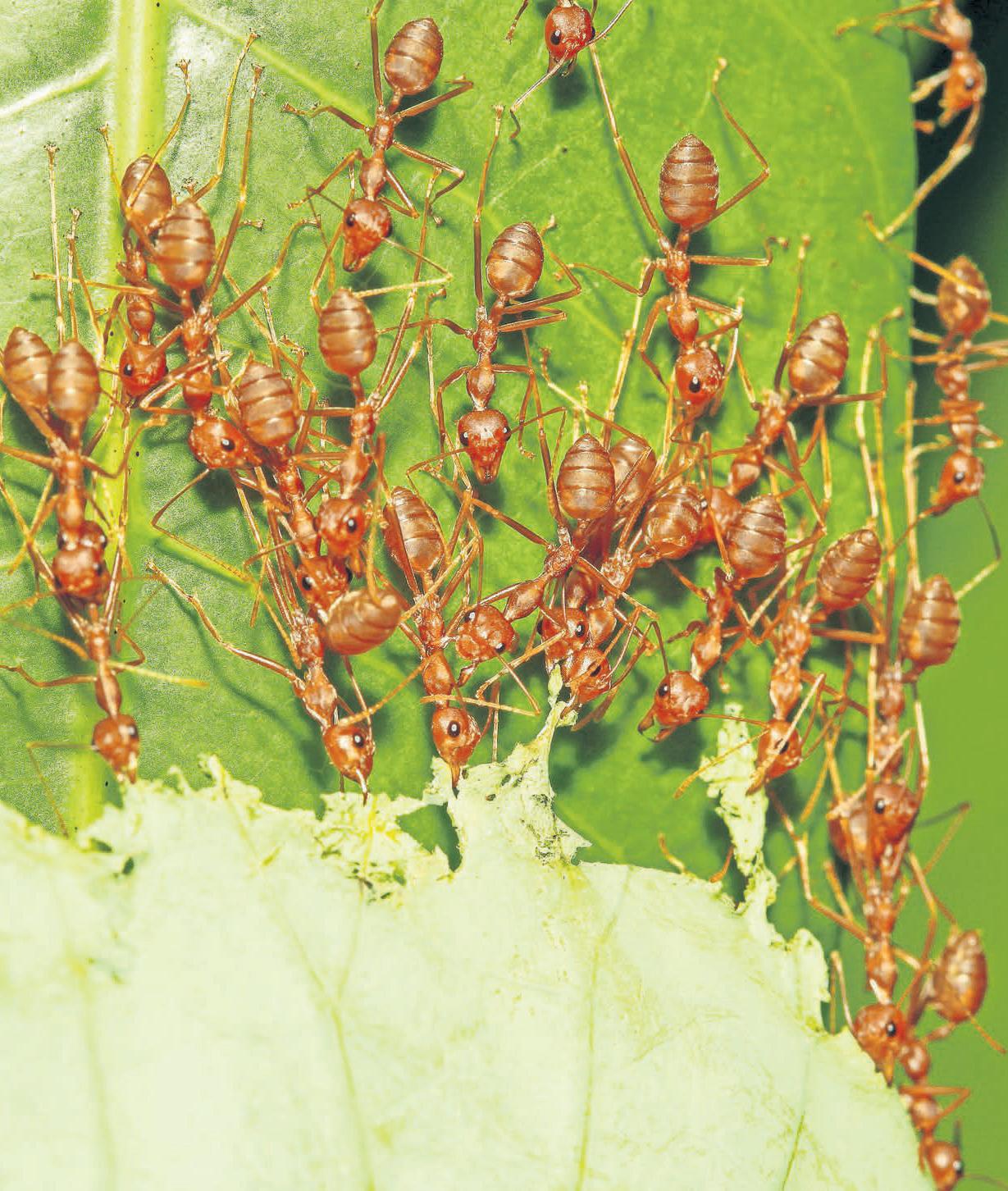
3 minute read
HOW TO GET RID OF & PREVENT ANTS


Advertisement
By Melissa Erickson More Content Now
Pesky little creatures, ants will take any opportunity to come into your home looking for food and water, and because they’re social creatures they’ll bring their ant friends, too.
Just killing the ants that make your home their home isn’t enough.
“Ants are very common and a big problem inside homes and businesses across the states. Obviously the winter slows their activity but in the warmer climates they stay active all year, ”said Jerry Schappert, an associate certified entomologist and owner of The Bug Doctor in Ocala, Florida.
In summer ants can show up in overwhelming numbers in kitchens and bathrooms searching for food and shelter.
“There are quite a few species in America but only around a dozen or more that will readily infest a home”including acrobat, Argentine, big-headed, carpenter, crazy, fire, ghost, little black, odorous house, pavement, pharaoh, rover, thief and white-footed ants, Schappert said.
Some are exotic, invasive nuisances without natural predators. Other local species are more desirable because they compete with destructive imported types like the red fire ant.
“Some like the carpenter ant (Camponotus pennsylvanicus) can and will damage a home; however the Florida carpenter ant (Camponotus floridanus) is not considered destructive, although it can inhabit wood already damaged by rot or termite,”Schappert said.
Ant types vary geographically.
“Treatments vary as much as the ant. It’s always best to get the proper Identification first. Not doing so can mean a lot of wasted time and money, ”Schappert said.
For example, spraying a pharaoh ant situation almost always doubles the problem.
“Part of their defense when a perceived threat hits is to split the colony. Now you have two nests. Spray again? Four, ”Schappert said.
To identify an ant, try to get a good cell phone shot.
“The closer and more magnified the better, ” Schappert said. Email it to a local pest control company, which can help classify it.
The key to keeping ants out is to make your home less open and attractive.
“As a general rule if homeowners reduce conducive conditions, their chances of having ants attracted to the home is less,”said Schappert, who offered these tips: • Keep shrubbery and trees from touching the house. • Seal any obvious gaps, cracks or potential points of entry into the home. • Keep grass trimmed low if it is up against the house. • Move log piles or other materials that sit undisturbed for long periods away from the home.
Garbage storage is a big attractant if kept outside but near the home as are uncleaned grills, especially if right next to the house, Schappert said.
There’s a multitude of DIY products available that are safe to be used around people and pets.
“Armed with the knowledge of what their ant eats, where they prefer to nest, etc., DIYers can feel reasonably confident they can win the battle with ants. Read and follow all label instructions,”Schappert said.
One major problem with treating ants on your own is that people often do not read labels.
“If they do, the tendency to double the mix rate or spray on all the surfaces causes a potential problem. Studies show that doubling the mix rate does not make the ant any deader, ”Schappert said.
Almost all ant infestations can be dealt with from the outside, except when the problem has festered too long.
“That said, we approach each ant call we get from the outside in first. Works very well,” Schappert said.








